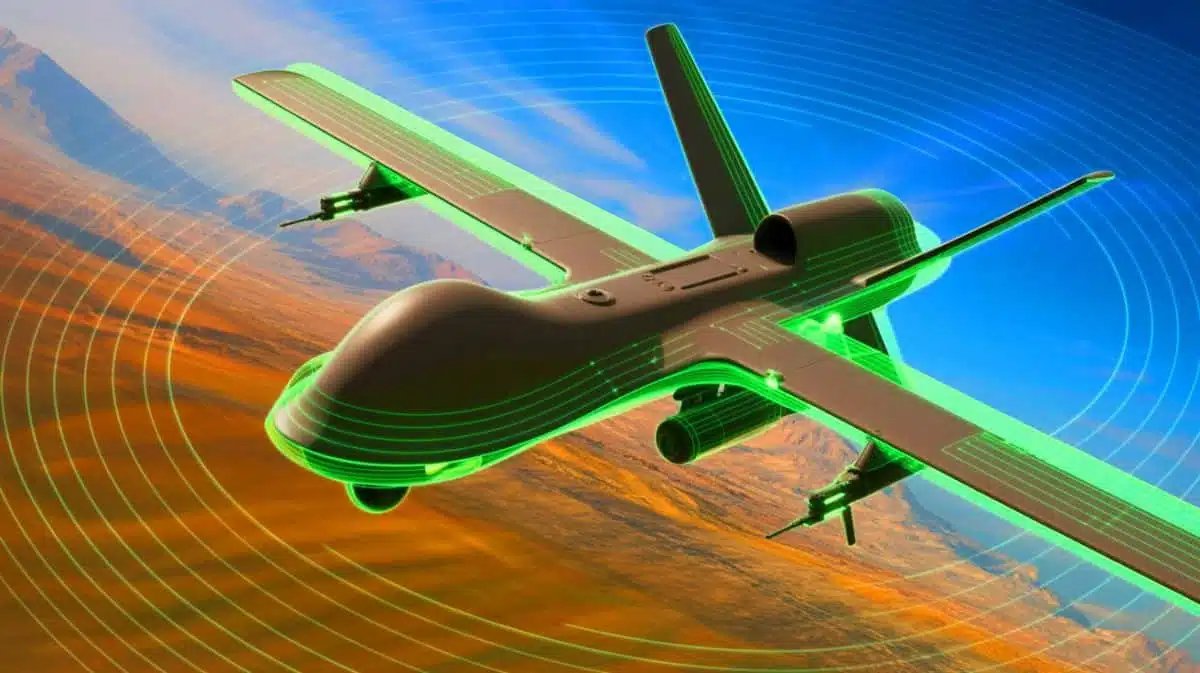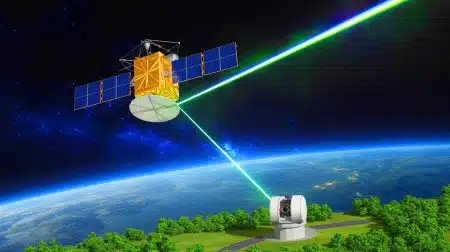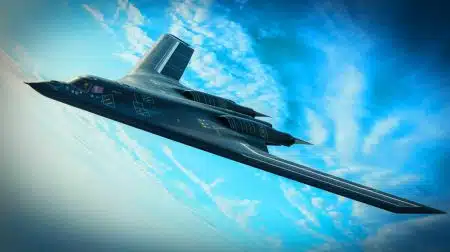| IN A NUTSHELL |
|
Recent advancements in technology have blurred the lines between science fiction and reality, especially in the realm of military innovation. A team of researchers at Zhejiang University in China has developed an “invisibility cloak” for aircraft and drones, capable of rendering them invisible to radar. This breakthrough technology could revolutionize how China deploys its military drones, providing a significant strategic advantage. The implications of such a technological leap are vast, potentially altering the balance of power in military engagements and raising questions about the future of warfare.
The Pursuit of Military Invisibility
For decades, the United States military has been at the forefront of developing stealth aircraft, such as the renowned F-35, designed to evade detection. These aircraft utilize special materials to absorb radar waves, making them less detectable. However, as radar technology becomes more sophisticated, the effectiveness of these measures has been challenged. This technological arms race has spurred other nations, notably China and Russia, to seek new solutions to maintain a tactical edge.
The challenge for engineers lies in manipulating electromagnetic waves to make objects invisible across both visible and invisible spectrums, such as radar waves. This endeavor involves the development of metamaterials, which can bend light and radar waves to circumvent objects instead of reflecting off them. The ultimate goal is to create devices that render aircraft and drones entirely invisible to enemy radars, fundamentally changing the dynamics of military strategy.
The Key Role of Chinese Research
China’s rapid advancement in stealth technology is noteworthy. As early as 2011, the Guangqi Advanced Technology Institute in China began producing specialized metamaterials for its fifth-generation fighter jets, like the J-20 Mighty Dragon. These materials reduce radar visibility but have yet to achieve total invisibility. In 2018, researchers at Zhejiang University took a significant step forward by designing an invisibility cloak specifically for drones.
Drones, being smaller and faster than traditional aircraft, pose a unique challenge for detection. The objective was to develop a system that makes these drones invisible to radar, even when moving at high speeds and in varied conditions, whether airborne, at sea, or on land. This innovation could redefine how drones are utilized, offering unprecedented stealth capabilities in military operations.
How the New Technology Works: An Adaptive Cloak
The innovation of Zhejiang University’s invisibility cloak lies in its intelligent approach. Unlike previous designs that merely covered an object with a static radar-bending material, this new technology incorporates artificial intelligence (AI) to adapt the cloak in real-time. Embedded sensors measure the characteristics of radar waves striking the object, and the AI adjusts the cloak’s structure to guide these waves around the drone, akin to a chameleon adapting to its surroundings.
This adaptability allows the cloak to function across a wide range of conditions, ensuring near-perfect invisibility. In controlled environment tests, drones equipped with this cloak demonstrated remarkable results. The intensity of radar waves they reflected was nearly identical to the surrounding environment. In contrast, a typical drone would reflect significantly more radar waves, making it easily detectable.
Military and Strategic Implications: A Decisive Edge
The development of this invisibility cloak could have far-reaching consequences for modern warfare, particularly in conflicts where drone use is pivotal. Imagine a swarm of Chinese drones, all invisible to radar, attacking a strategic target. This would significantly complicate enemy defense efforts, as these drones would be both invisible and fast, making interception extremely challenging.
This technology could provide a decisive advantage, especially in sensitive areas like the South China Sea, where China conducts military activities and claims extensive maritime territories. In a war scenario, a fleet of invisible drones could penetrate enemy defenses undetected and execute strikes before the threat is even perceived.
The invisibility cloak offers fascinating prospects, yet it is not without its limitations. Researchers continue to refine the technology, particularly to ensure that radar waves of varying frequencies can be precisely manipulated.
https://visegradpost.com/en/2025/08/07/this-could-save-nuclear-reactors-us-researchers-develop-particle-dampers-to-protect-reactors-from-devastating-earthquakes/
Additionally, while promising for drones, large-scale application remains a challenge. The current focus is on rendering these drones invisible to enemy radars, but broader implementation may face technical hurdles.
It remains to be seen if this technology can be perfected for broader applications, such as next-generation fighter jets. Metamaterials research is continually evolving, and the coming years may yield even more surprising advancements in invisibility.
As the race for military stealth technology intensifies, the emergence of radar-invisible drones raises critical questions about international security and the future of warfare. How will global powers respond to this technological advancement, and what new strategies will emerge in this ever-evolving battlefield?
Did you like it? 4.5/5 (26)







Wow, this is like something straight out of a sci-fi movie! How soon can we expect this tech to be operational? 🤔
Does this mean traditional radar systems are becoming obsolete? 😱
I’m skeptical. How can we be sure these claims about invisibility are true?
Invisibility cloaks for drones? What’s next, teleportation? 😂
Thank you for the insightful article. It’s both fascinating and terrifying!
How might this affect global military alliances? Will countries seek new partnerships?
Sounds like China is taking military stealth to a whole new level! 🚀
Is this technology purely theoretical, or have there been successful tests?